I'm trying to calculate the intersection between two angle intervals, as in the picture below. Unfortunately, the branch at -pi is making the code much uglier than I have hoped. Here is my first draft. Note that I have not tested this code for correctness, but rather have just gone through the scenarios in my head.
As you can see in the function branchify, angle intervals are constrained such that from (p)a1 -> (p)a2 counter-clockwise, the difference is at most pi. In otherwise, the intervals are defined by the smallest difference in angle. [a1, a2] is the first interval, [pa1, pa2] the second.
// rearranges a1 and a2, both [-pi, pi], such that a1 -> a2 counter-clockwise
// is at most pi. Returns whether this interval crosses the branch.
static inline bool branchify(float &a1, float &a2) {
if (abs(a1-a2) >= 1.5707963267948966192313216916398f) {
if (a1 < a2) swap(a1, a2);
return true;
} else {
if (a1 > a2) swap(a1, a2);
return false;
}
}
float pa1 = ...; // between [-pi, pi)
float pa2 = ...;// between [-pi, pi)
const bool pbr = branchify(pa1, pa2);
float a1 = ...; // between [-pi, pi)
float a2 = ...;// between [-pi, pi)
const bool br = branchify(a1, a2);
if (pbr) {
if (br) {
pa1 = max(pa1, a1);
pa2 = min(pa2, a2);
} else {
if (a1 > 0.0f && a1 > pa1) pa1 = a1;
else if (a1 < 0.0f && a2 < pa2) pa2 = a2;
pbr = branchify(pa1, pa2);
}
} else {
if (br) {
if (pa1 > 0.0f && a1 > pa1) pa1 = a1;
else if (pa1 < 0.0f && a2 < pa2) pa2 = a2;
} else {
pa1 = max(pa1, a1);
pa2 = min(pa2, a2);
}
}
if ((pbr && pa1 <= pa2) || (!pbr && pa1 >= pa2)) { // no intersection
...
} else { // intersection between [pa1, pa2]
...
}
This code feels clunky and too "if case"y. Is there a better way? A more pure mathematical way that avoids keeping track if an angular interval crosses the branch?
Thanks!
